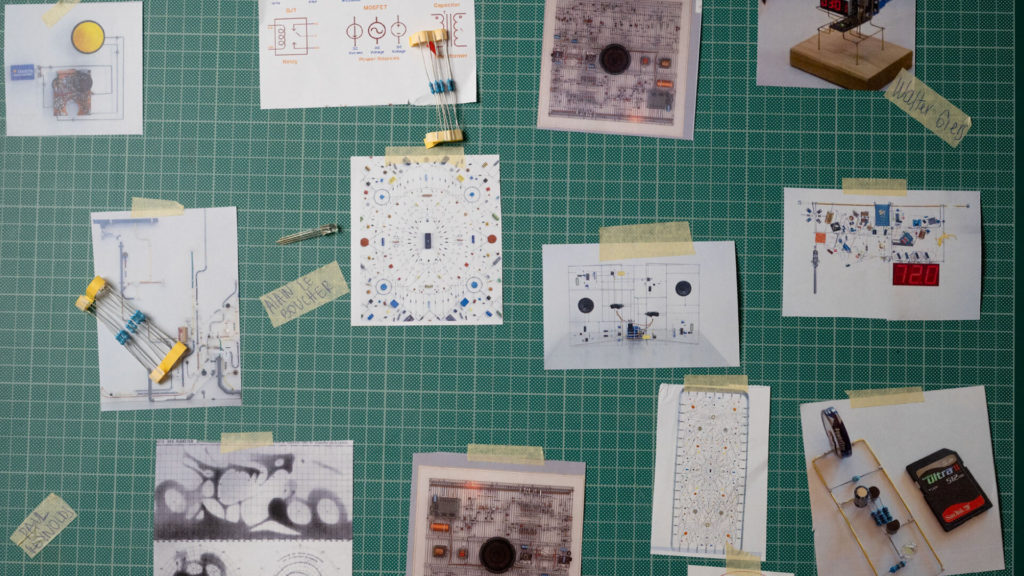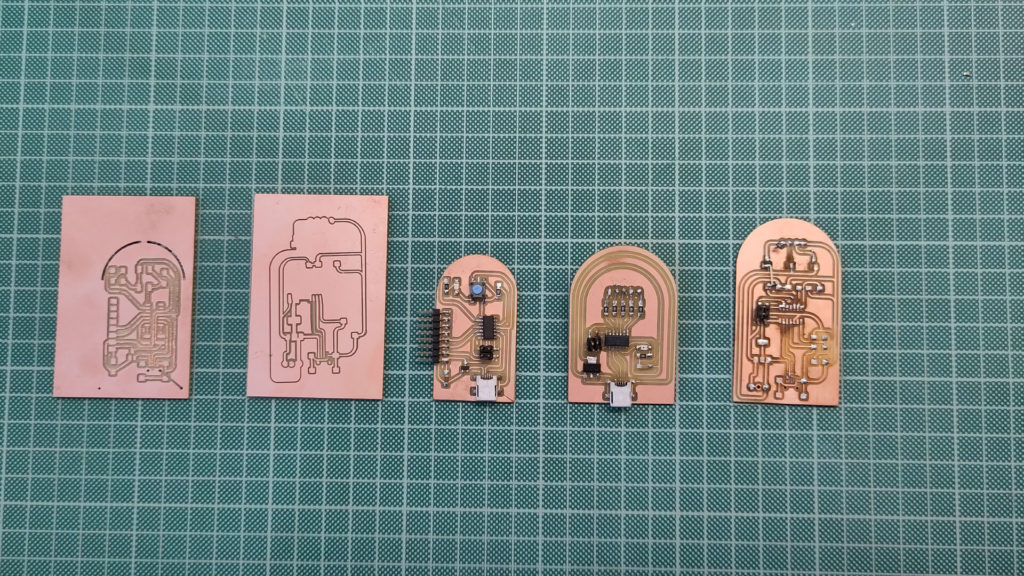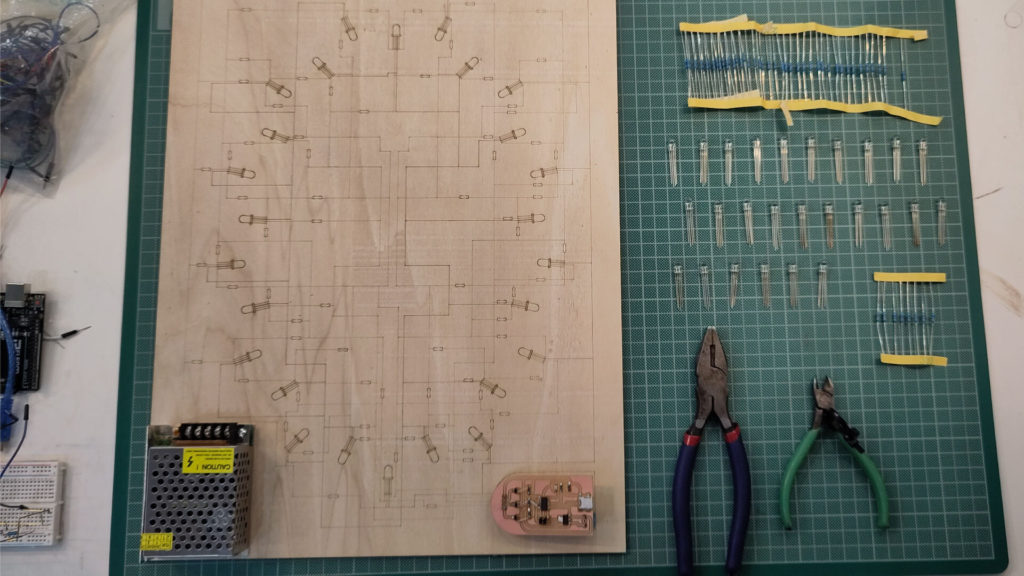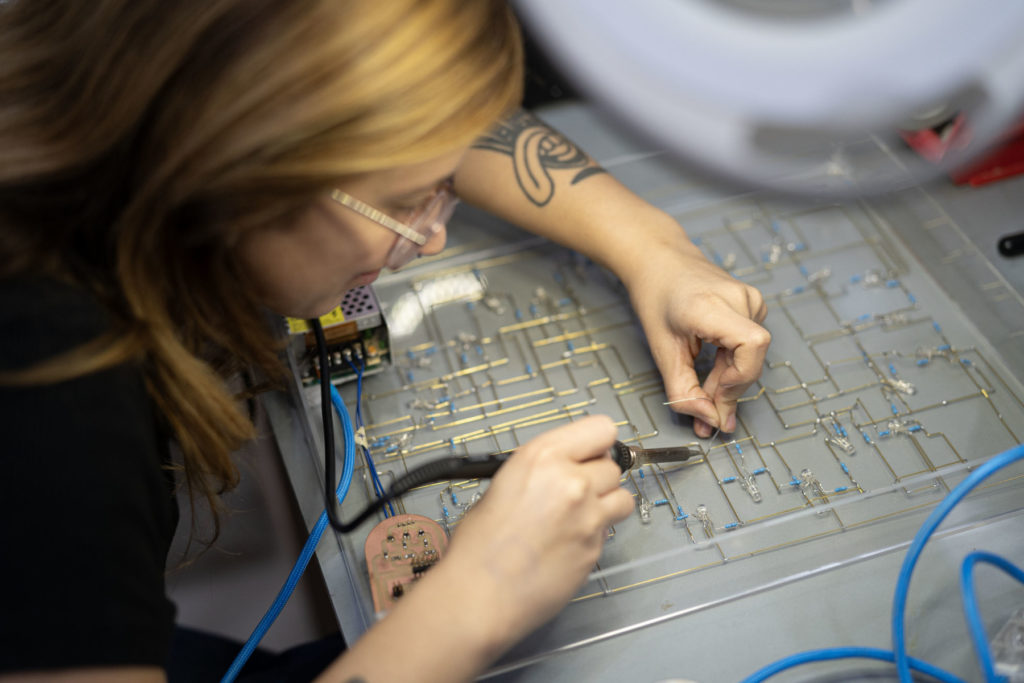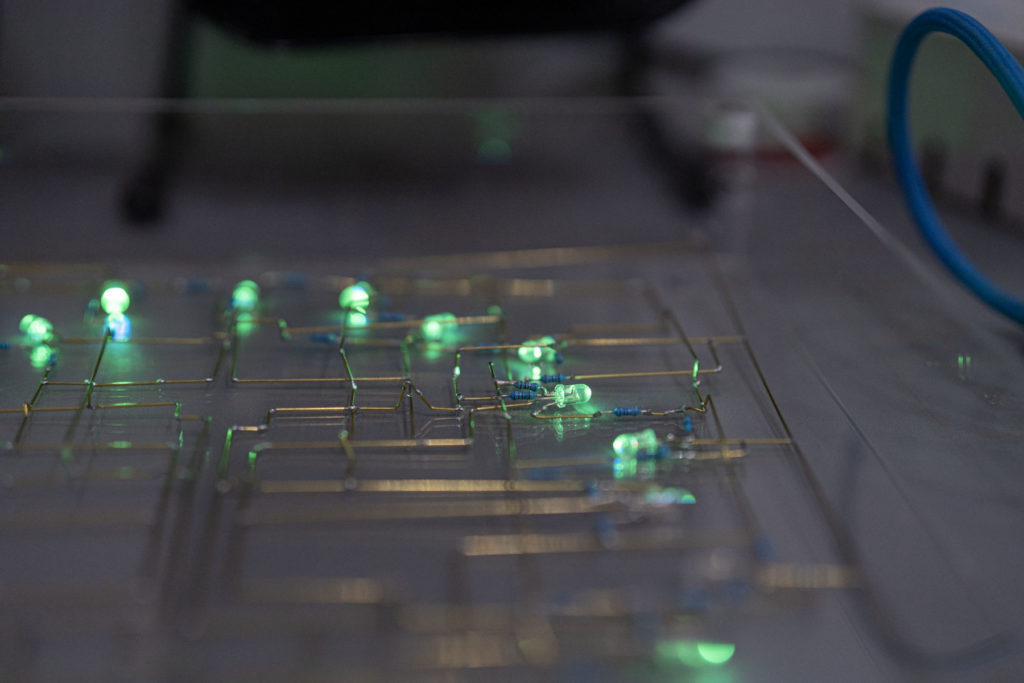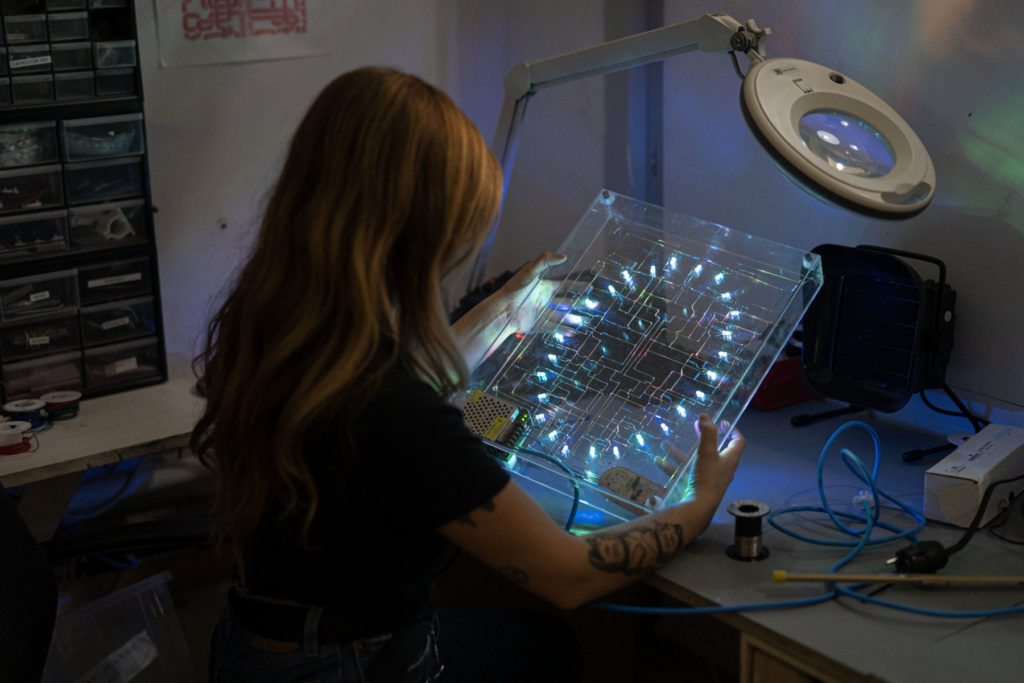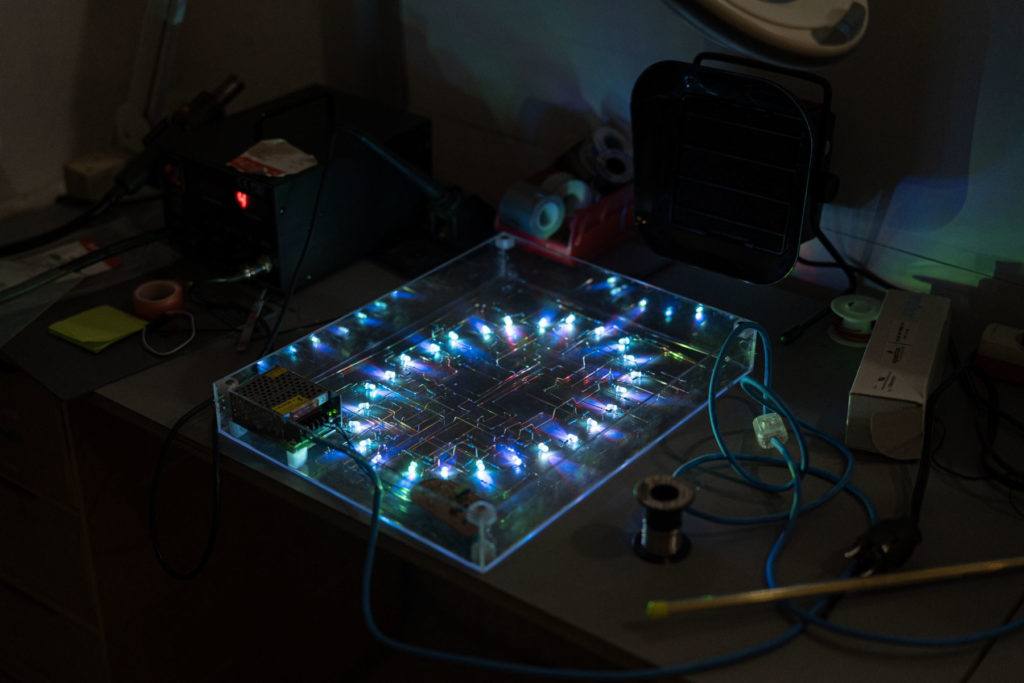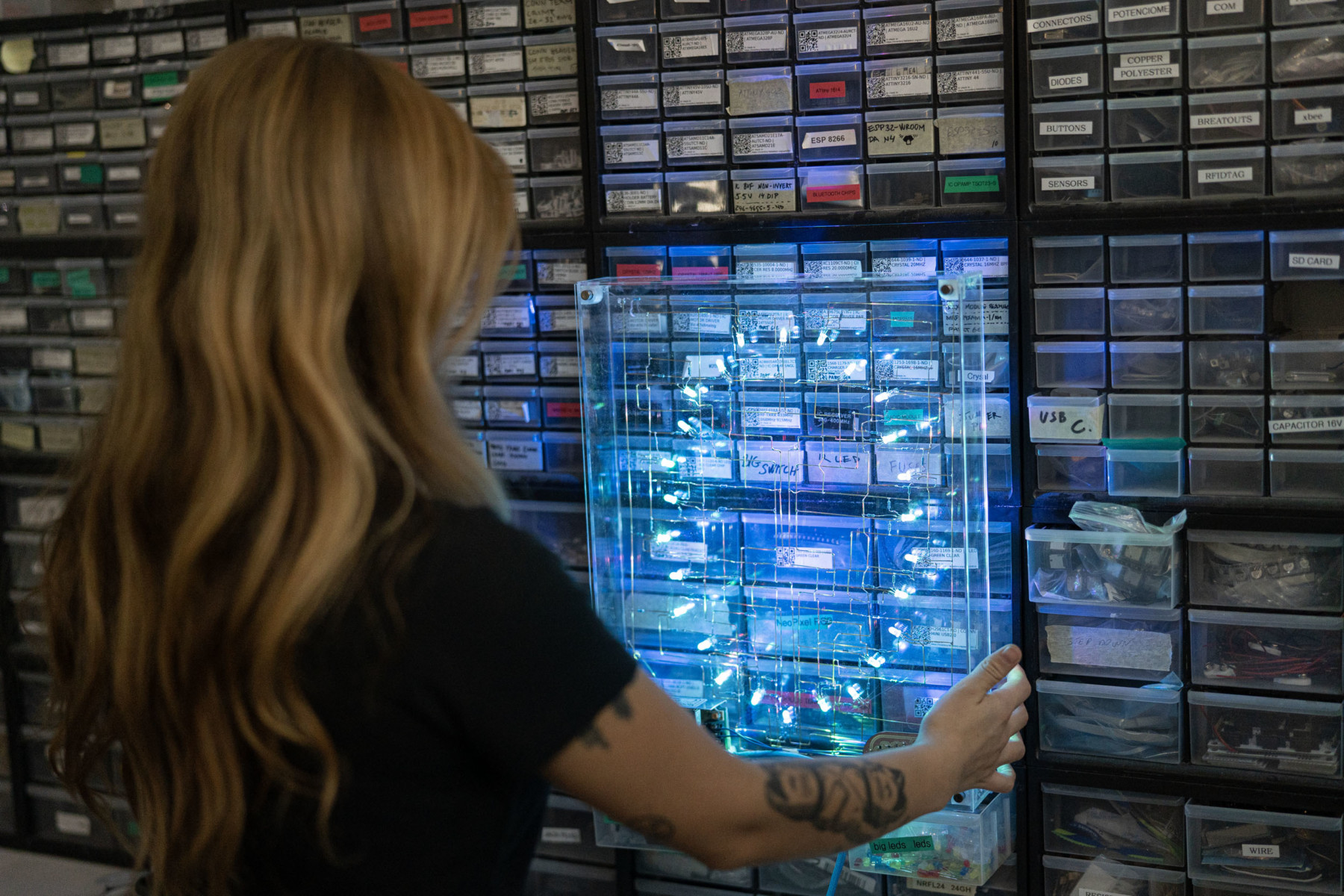
When craft meets electronics
By combining two distinct fields, this Fab Academy project presents us with a free form electronic sculpture that reacts to the light in the environment
Introducing Manuela Reyes, a Colombian art director, designer and maker. In the following interview, she shares her experience through the six months of Fab Academy and gives insights about her final project merging electronics with craft to create a free form electronic sculpture that reacts to the surrounding light.
1. Tell us a bit about yourself. What did you do before you started Fab Academy?
I am a Colombian designer based in Barcelona. I have a bachelor’s degree in Product and Service design, focused on sustainability from IED Milano, and a Master’s in Art Direction and Communication Strategy from Elisava.
My current work as an art director includes creating visual identities, photography, data visualisation, web, and spatial design for Fab Lab Barcelona, Fab City, and EU projects. My interest is to portray complex and dense information in captivating graphical and physical form.
2. Why and when did you choose to apply to Fab Academy?
I chose Fab Academy for two main reasons. Firstly, I consider that anyone that is looking for a self sufficient future, should follow a program like this. Being able to create from zero gives the advantage of resourcefulness but also, knowing how to repair, how to reuse and recreate with what we have. Secondly, coming from a design background, I think I already had the tools to make things look nice and from comms strategy I know how to communicate. But I was missing the core, that is how things actually work, that is what Fab Academy is about.
I’ve been working in Fab Lab Barcelona for six years now and ever since I started, I really wanted to do Fab Academy. It was the perfect occasion to do it this year. I think it was a moment of either I do it now or I’m never going to do it. This year it was the perfect moment to organize myself with work and Fab Academy, using half of the time to work and half of the time to study, and it worked.
3. What is it like being back to school for six months?
Amazing. I wouldn’t quit school ever. I could keep learning for the rest of my life. Plus Fab Academy is absolutely different from other kinds of universities. I think something we don’t understand is the fast speed it has. Each week offers something completely different and has a focus on a different production method such as electronic production, CNC milling, 3D printing, laser cutting, etc. There is one class per week, which is like a typical class with a presentation. Then the rest of the time it’s complete experimentation. It’s up to us to experiment with the tools and the machines that we are given and decide ourselves how we use them for something that we really want to do.
One of the coolest aspects of Fab Academy is the idea that we do produce locally. All the files and material are in-house but then we have a local community of fab labs in Spain to get feedback from, and then a global community of more than 1300 labs.
4. Which one out of all the Fab Academy classes was your favorite?
My favorite week was electronics, which was completely unexpected because it’s something that I didn’t fully understand. Electronics offer a new universe which is not that explored in the art or design fields, yet it has infinite possibilities to pursue. To really understand it, I had to decompose it completely in order to see what electronics are from the core. This is what I based my final project on.
5. Did something go wrong during the six months?
Every week there was a fail. This is the thing with Fab Academy, sometimes it feels like it’s two steps back and one step forward. So every time that I was doing something right, a new thing came out wrong, but in a different way from before so it’s always getting a bit further.
In Fab Academy it’s overwhelming the amount of information and new tools that we were always scared to go for and then once we were able to accomplish something, we could not stop experimenting with it. For example, soldering and welding seem dangerous at first but if you ensure a safe working space, being able to work with those processes is absolutely amazing.
6. When did you realize you got an idea for your final project?
Since the beginning I have had the objective for my final project – to incorporate a mix of digital fabrication with the concept of the artisanal process. I knew this was my goal. I didn’t know how to do it. The idea of what to do in my final project came during the last weeks of the program.
7. How did Fab Academy guide you in prototyping your idea?
Fab Academy helped me to develop my idea more in relation to the tools I could use and that I could realize it through different processes which I could do myself without the help of someone else or externalizing some part of the process.
8. Did the other Fab Academy students help you in the process?
We help each other always and it’s amazing the collaboration between the different backgrounds. There’s someone that works with code, there’s someone that works with UX/UI, etc., so it works in terms of giving each other feedback. I help the others more with the final look or the touch of the photography and video.
9. What techniques did you use to create your final project?
I used the CNC for the PCB board. I used laser cutting for making the guidance of all the electronics I needed to do and also to cut the case in which I put my sculpture. I also used 3D printing to make the hinges for the board.
10. Could you describe your final project?
My final project for Fad Academy is a free form electronic sculpture that reacts to the light in the environment. Ever since I started Fab Academy, I have been amazed that all of the conversation around it is always so binary, it’s always 1-0, low-high, true-false. For me that didn’t make any sense because it’s not one or the other, it’s always two sides of the same coin. What I’m doing with the project is interpreting this by having a pattern hidden inside of the sculpture. When the light is off, it’s only a sculpture to see the ramifications and connections between the electronic components. Once it lights up, there is an oval of LEDs.
The system I created was thinking in 3D instead of just flat surface so that I could work on a project that is different from what I work on daily. I work in graphic design which is always 2D, but being able to actually make things that can grow in another dimension, it’s amazing.
11. How do you imagine your project developing after Fab Academy?
The cool part of the project that I developed is that it’s a system that could continue growing or be used for other projects. For now, it only lights up when there is a low amount of light in the environment but adding a board and connecting it online could represent through the lights infinite possibilities: lunar phases, when it rains, when I get a message, when I’m in the REM stage of sleep…
12. How do you see yourself after you graduate?
After graduation, I want to dedicate more time to document my upcoming projects as I did in Fab Academy so anyone could replicate them. Something that I learned is that once Fab Academy is done, it’s time to start over and continue experimenting with the learned processes.
13. Do you feel that you’re now part of a network with the other Fab Academy students?
I do feel that a network was created throughout Fab Academy. There’s this class that we have on Tuesdays where we connect with all of the Fab Labs in Spain and we get feedback from different instructors, which I did not expect would happen. What’s more, each Wednesday we have a session with all of the Fab Labs around the world where we are able to connect to them and can get their feedback as well.
14. Who would you recommend Fab Academy to?
I would recommend this course to curious people that don’t conform with only buying stuff but actually want to learn how to make things from scratch in a way that is not conventional. Also, to people with a project in mind but with the need of technical resources and knowledge to develop it.
Want to learn more about Fab Academy?
Find all the details here
